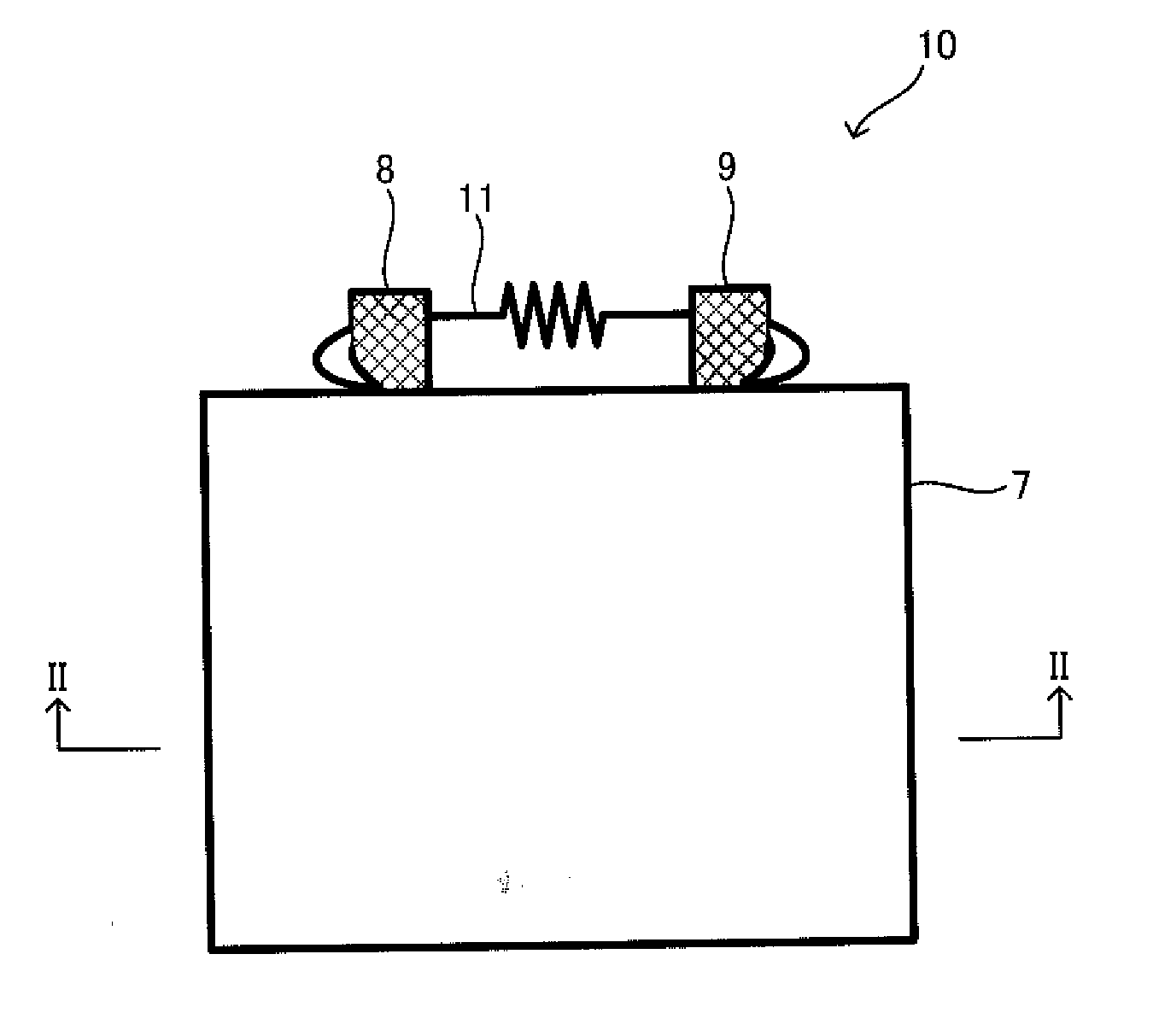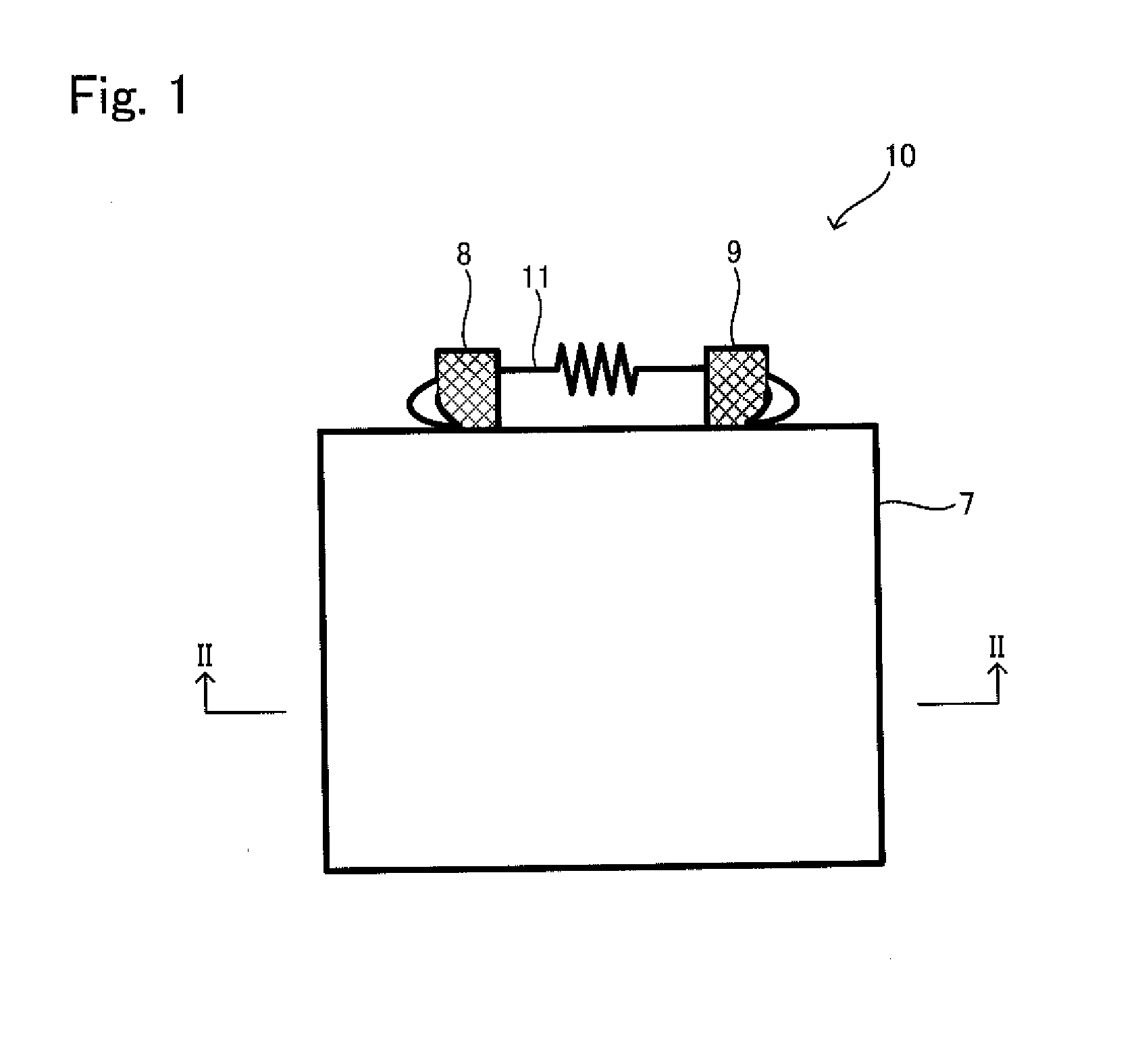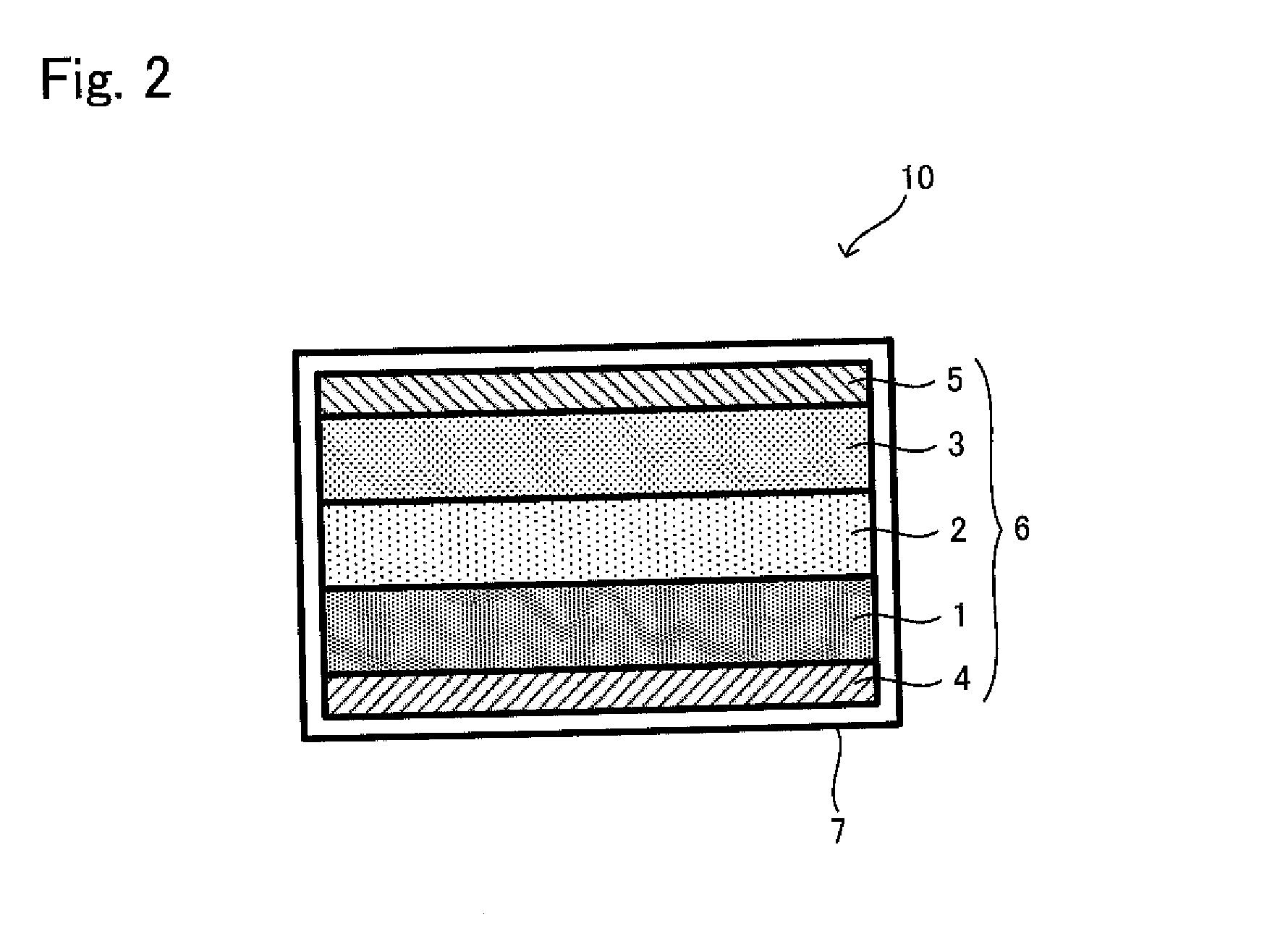Solid battery and method for manufacturing the same
a technology of solid batteries and manufacturing methods, applied in the field of solid batteries, to achieve the effect of reducing the resistance of the battery, and reducing the voltage of the battery
- Summary
- Abstract
- Description
- Claims
- Application Information
AI Technical Summary
Benefits of technology
Problems solved by technology
Method used
Image
Examples
example 1
[0047]After the electrode body was made by the above step, the electrode body was discharged with a constant current of 1.5 mA down to 0V, and thereafter discharged with a constant voltage of 0V for 10 hours . After that, confirming that the open-circuit voltage was 0.5V or less (specifically, 0.3V), the electrode was kept under a temperature of 25° C. for 24 hours.
[0048]Then, the electrode body was charged with a constant current of 0.3 mA up to 4.2V, and thereafter discharged with a current of 0.3 mA down to 2.5V. After that, the electrode body was charged to 3.6V to adjust the voltage then impedance analysis was carried out by using a solartron to obtain the resistance value. The result was shown in FIG. 5. The vertical axis of FIG. 5 represents resistance defining the resistance of the electrode body of the Comparative Example 2 described later as 1. It should be noted that, the discharge was performed with the constant current of 1.5 mA, but the current value of the constant cu...
example 2
[0049]The cathode layer and the anode layer of the electrode body produced by the above step were electrically connected by a removable conductive member (a copper wire), and kept with an open-circuit voltage of 0V for 10 hours. After that, confirming that the open-circuit voltage was 0.3V, the electrode body was kept under a temperature of 25° C. for 24 hours. Thereafter, the electrode body was charged with a constant current of 0.3 mA up to 4.2V, then discharged with a current of 0.3 mA down to 2.5V. After that, the electrode was charged to 3.6V to adjust the voltage then impedance analysis was carried out by using a solartron to obtain the resistance value. The result was shown in FIG. 5.
PUM
| Property | Measurement | Unit |
|---|---|---|
| voltage | aaaaa | aaaaa |
| voltage | aaaaa | aaaaa |
| pressure | aaaaa | aaaaa |
Abstract
Description
Claims
Application Information
 Login to View More
Login to View More - R&D
- Intellectual Property
- Life Sciences
- Materials
- Tech Scout
- Unparalleled Data Quality
- Higher Quality Content
- 60% Fewer Hallucinations
Browse by: Latest US Patents, China's latest patents, Technical Efficacy Thesaurus, Application Domain, Technology Topic, Popular Technical Reports.
© 2025 PatSnap. All rights reserved.Legal|Privacy policy|Modern Slavery Act Transparency Statement|Sitemap|About US| Contact US: help@patsnap.com



